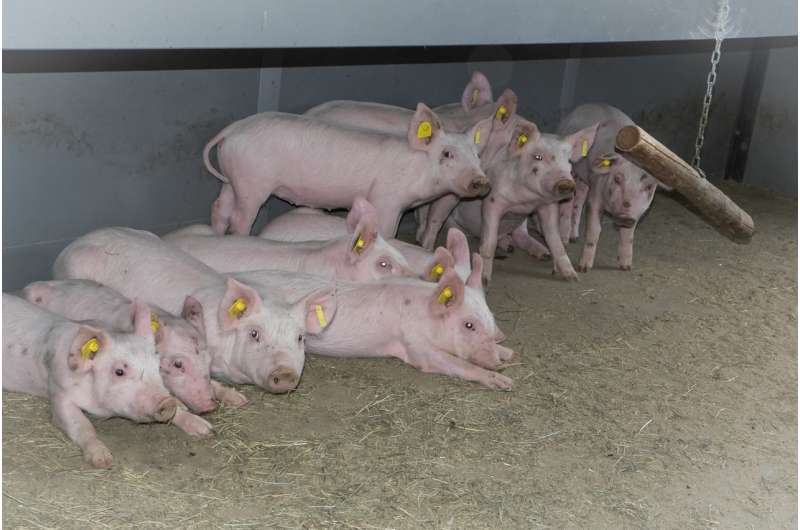Earth-air heat exchanger best way to protect farm animals in livestock buildings against the effects of climate change

Without countermeasures, climate change will negatively impact animals in pig and poultry production. Beside the health and wellbeing of the animals, heat stress also affects performance and, as a result, profitability. As the animals are predominantly kept in confined livestock buildings equipped with mechanical ventilation systems, researchers at Vetmeduni Vienna examined the inlet air temperature of several air cooling systems. The best solution, they found, is the use of the earth for heat storage via an earth-air heat exchanger (EAHE). An EAHE cools in the summer, and warms up the inlet air during wintertime.
The higher temperatures resulting from climate change will require certain measures to be taken in pig and poultry production. Without suitable cooling systems, animals kept in confined livestock buildings would face increased heat stress. That would have a negative effect on the wellbeing of the animals. And, as a result of lower feed conversion or egg production, it would also have an economic impact.
A comprehensive study conducted by Vetmeduni Vienna, BOKU and ZAMG has now shown that the usual cooling systems, such as earth-air heat exchangers or direct and indirect evaporative cooling, some of which have been established practice since the 1960s, are good choices for cooling livestock buildings. Apart from the investment costs, an earth-air heat exchanger is the most efficient system. In an EAHE, outside air flows through tubes with a length of about 40 m, buried at a depth of about 2 m. The systems works somewhat like a cellar, which is cooler in the summer and warmer in the winter.
Earth-air heat exchanger better than evaporative cooling
The heat stress on animals from temperature and humidity can be measured using the so-called temperature-humidity index. These parameters have been established for people as well as for many farm animals and they are an important factor for determining which cooling systems best protect animals kept in confined livestock buildings from heat stress.
Three common cooling systems, all of which also find use in residential situations, were examined as part of the study. One system cools the air by using the earth for heat storage, the other two systems cool via the direct or indirect evaporation of water. "These two systems function in a similar way as swearting. The indirect method, however, also uses a heat exchanger to avoid humidification," as study director Günther Schauberger explains.
"Our calculations showed that an earth-air heat exchanger is the most efficient system for confined livestock buildings. The method cools the air accordingly during the summer. And heating the inlet air in winter significantly improves the flow rate and thus the air quality in the building," Schauberger says. "This makes is possible to completely avoid heat stress for the animals."
Direct evaporative cooling, on the other hand, has the disadvantage that cooling the air also results in increased humidity. The indirect method avoids this disadvantage, but the cooling is less efficient. "In the end, however, you also have to consider the investment of such an air preparation system, which we did not include in our analysis," says Schauberger. The study was conducted as part of the Austrian Climate Research Program.
More information: Ronja Vitt et al. Modelled performance of energy saving air treatment devices to mitigate heat stress for confined livestock buildings in Central Europe, Biosystems Engineering (2017). DOI: 10.1016/j.biosystemseng.2017.09.013
Journal information: Biosystems Engineering
Provided by University of Veterinary Medicine—Vienna



















